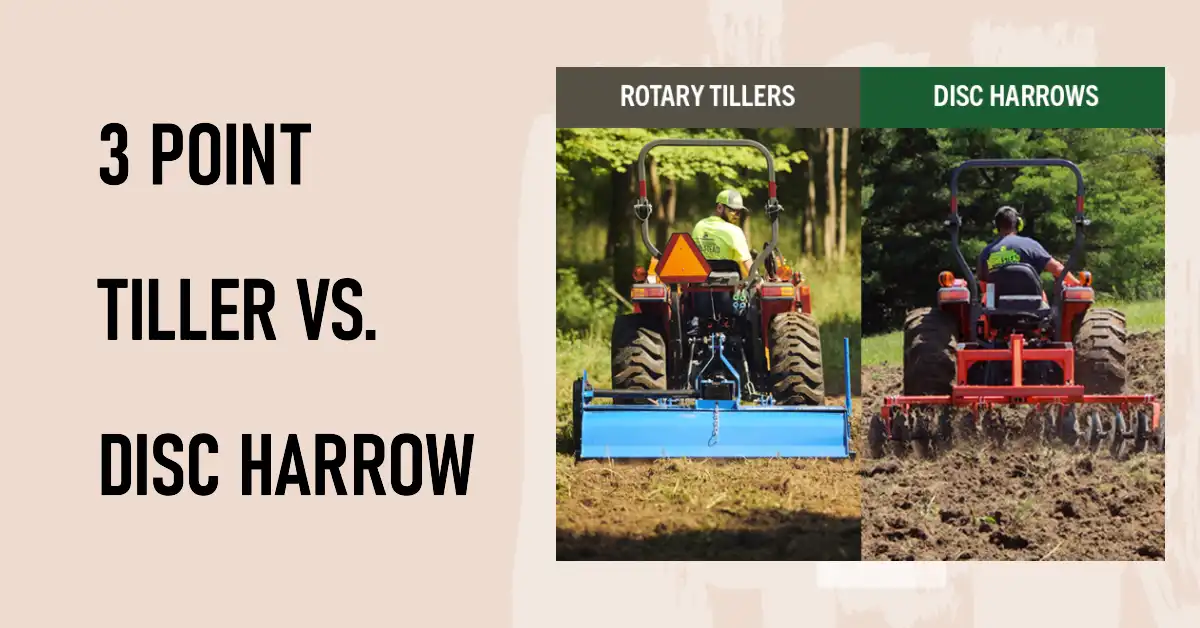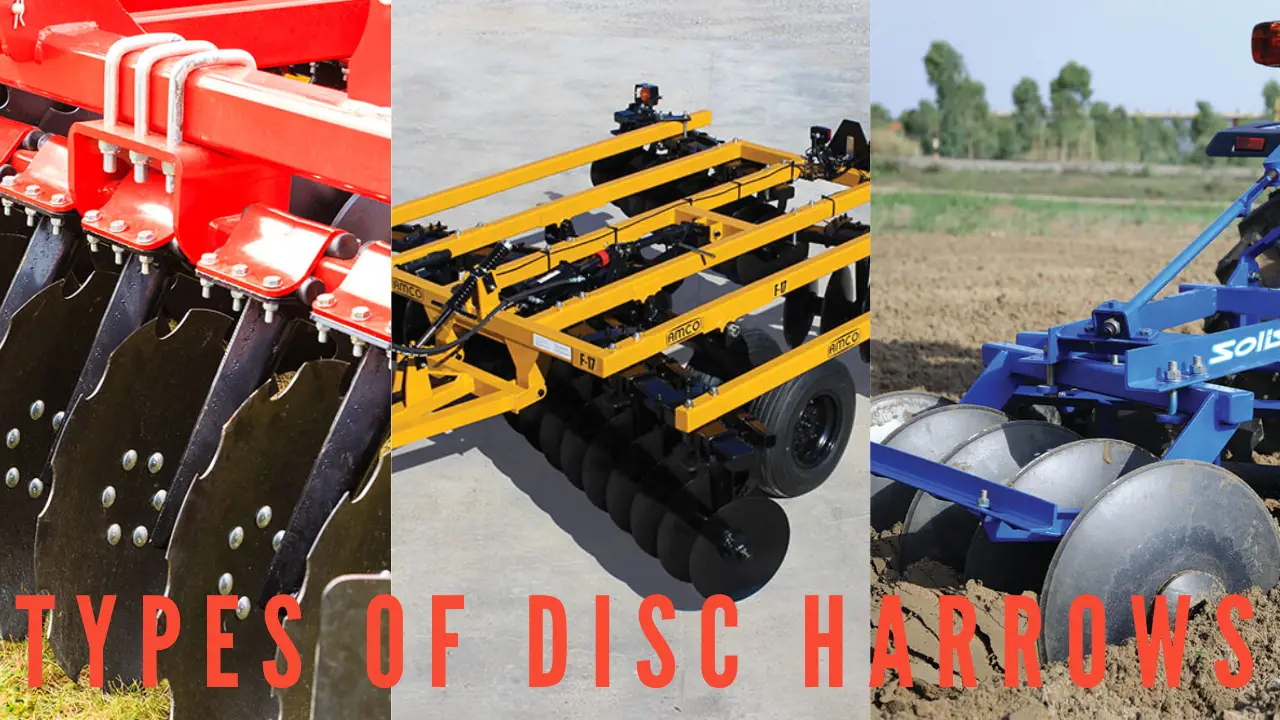This post may contain affiliate links which means I may receive a commission for purchases made through links. Learn more on my Private Policy page.
You’re ready to take your farm to the next level and invest in a disc harrow, but with so many types to choose from, how do you know which one is right for you? The decision may seem overwhelming at first, but fear not! In this article, we’ll break down the key factors to consider when selecting a disc harrow that aligns perfectly with your farm’s needs and objectives. By the end, you’ll be equipped with the knowledge and confidence to make a well-informed decision that will optimize your farming operations and yield outstanding results. So, let’s get started on finding your farm’s perfect match!
Factors to Consider
When it comes to choosing the right type of disc harrow for your farm, there are several factors that you need to take into consideration. These factors include soil type, farm size, field conditions, crop type, budget, and harrow types. Each of these factors plays a crucial role in determining the most suitable type of disc harrow for your specific needs. In this article, we will explore each of these factors in detail to help you make an informed decision.
Soil Type
The first factor to consider when choosing a disc harrow is the type of soil you have on your farm. Different soil types require different types of harrows for optimal performance. Here are some common soil types and the corresponding harrows that work well with them:
Clay Soil
Clay soil is heavy and sticky, making it prone to compaction. To effectively break up this type of soil, a disc harrow with sharp blades and a robust construction is recommended. The weight and design of the harrow are important factors to ensure that it can effectively penetrate and turn the soil.
Sandy Soil
Sandy soil is loose and drains quickly, which can make it more challenging to fully incorporate organic matter and nutrients. In this case, a disc harrow with smaller blades and a lighter construction is ideal. These harrows can help mix and break down the soil without excessive disturbance.
Loamy Soil
Loamy soil is considered the ideal type of soil for agriculture as it contains a balanced mixture of sand, silt, and clay. This type of soil requires a versatile disc harrow that can handle moderate compaction and effectively mix the soil. Look for a harrow that offers adjustable blade angles to accommodate different soil conditions.
Rocky Soil
If your farm has a lot of rocky areas, you need a disc harrow that is specifically designed to handle such conditions. Look for a harrow with durable blades and a strong frame that can withstand the impact of rocks without causing damage. Adjustable blade spacings can also be beneficial to avoid getting stuck on larger rocks.

This image is property of t-news.b-cdn.net.
Farm Size
The size of your farm is another important factor to consider when choosing a disc harrow. The size of the harrow should be compatible with the size of your farm to ensure efficient operation and productivity. Here are some considerations based on farm size:
Small Farms
For small farms with limited acreage, a compact and maneuverable disc harrow is often the best choice. Look for harrows that are easy to tow and can navigate narrow spaces. Compact harrows are not only more efficient for smaller areas but also more cost-effective.
Medium Farms
Medium-sized farms require a balance between efficiency and versatility. In this case, a medium-sized disc harrow that offers good ground coverage and adjustable settings is recommended. These harrows can handle a wider range of field conditions and provide efficient tillage.
Large Farms
For large farms with extensive acreage, efficiency and productivity are essential. In these cases, larger disc harrows with wider working widths are preferred. Look for harrows that have robust construction, effective depth control, and easy towing capabilities.
Field Conditions
Field conditions play a crucial role in determining the type of disc harrow that will work best for your farm. Here are some common field conditions and the corresponding harrows that are suitable for each:
Level Field
If your field is relatively flat and free from major obstructions, a standard disc harrow can effectively handle the tillage. Look for harrows with adjustable blade angles and spacings to accommodate different soil types and levels of compaction.
Hilly or Sloping Fields
For fields with slopes or hilly terrain, it is important to choose a disc harrow that offers good stability and traction. Look for harrows with sturdy frames, adjustable gang angles, and heavy-duty tires to ensure safe and effective operation on uneven surfaces.
Stony Fields
Fields with a high presence of rocks and stones require a disc harrow that is specifically designed to handle such conditions without causing excessive wear or damage. Harrows with durable blades and robust frames are essential for working in stony fields.
Wet or Marshy Fields
If you have fields that are prone to being wet or marshy, it is important to choose a disc harrow that can effectively operate in these conditions. Look for harrows that offer good flotation and have self-cleaning features to minimize the risk of getting stuck in wet soil.

This image is property of smallfarmersjournal.com.
Crop Type
The type of crops you grow on your farm also plays a crucial role in selecting the right disc harrow. Different crops have different tillage requirements, and choosing the appropriate harrow can greatly impact their growth and yield. Here are some common crop types and the corresponding harrows that work well with them:
Grains
For grain crops, such as wheat, corn, or barley, a disc harrow that can effectively incorporate crop residues into the soil is important. Look for harrows with adjustable blade angles and good mixing capabilities to ensure optimal seedbed preparation.
Vegetables
Vegetable crops require a fine and well-prepared seedbed for successful growth. Choosing a disc harrow that can provide thorough soil pulverization and weed control is crucial. Look for harrows that have closely spaced blades and good soil penetration.
Fruits
Fruit crops, such as orchard trees or vineyards, require careful tillage to avoid damaging the root systems. In this case, a disc harrow with offset gangs or self-leveling features is recommended. These harrows can effectively work around the crops without causing unnecessary harm.
Flowers
When it comes to flower crops, weed control and soil preparation are of utmost importance. Look for disc harrows with good soil pulverization capabilities and adjustable settings to cater to the specific needs of different flower varieties.
Livestock Forage
For farms that produce livestock forage, such as hay or silage, a disc harrow that can effectively incorporate seeds and provide good seed-to-soil contact is essential. Look for harrows with offset gangs or additional seedbox attachments for efficient seedbed preparation.
Budget
Budget is always an important consideration when making any agricultural equipment purchase, including disc harrows. Here are some budget options to consider when choosing a disc harrow:
Economy Models
Economy models of disc harrows are more affordable options that still provide essential tillage functions. Although they may have fewer features and lower build quality compared to higher-end models, they can still get the job done for smaller farms or less intensive operations.
Mid-range Models
Mid-range models offer a good balance between affordability and performance. They often come with additional features, such as adjustable settings and sturdy construction, which make them suitable for a wide range of farm sizes and field conditions.
High-end Models
High-end models of disc harrows are more expensive but offer advanced features and durability. These harrows are designed for larger farms or heavy-duty use. They often come with additional options, such as hydraulic depth control or GPS guidance systems, to enhance efficiency and accuracy.

This image is property of etractorimplements.com.
Harrow Types
Disc harrows come in different types, each with their own set of features, advantages, and disadvantages. Understanding the different harrow types can help you choose the right one for your farm. Here are some common harrow types:
Tandem Disc Harrow
Tandem disc harrows consist of two sets of discs that work in tandem to till the soil. They are known for their excellent ground coverage and ability to handle tough soil conditions. Some features of tandem disc harrows include adjustable gangs, heavy-duty frames, and large blade diameters.
Advantages
- Excellent soil penetration and mixing capabilities
- Suitable for a wide range of soil types and field conditions
- High ground coverage, resulting in efficient tillage
Disadvantages
- Larger size and weight may require more powerful tractors
- Higher initial investment compared to other harrow types
Offset Disc Harrow
Offset disc harrows have a unique design where the gangs are slightly offset from each other. This design allows for better maneuverability and seedbed preparation. These harrows often come with adjustable gang angles, strong frames, and individual blade scrapers.
Advantages
- Improved maneuverability and ability to work close to field borders
- Effective seedbed preparation with good soil pulverization
- Better residue handling due to offset gangs
Disadvantages
- Limited ground coverage compared to tandem disc harrows
- May require more frequent blade maintenance due to offset design
Pull Type Disc Harrow
Pull type disc harrows are attached to a tractor using a hitch and are pulled behind. They have a simple and straightforward design, making them easy to operate and maintain. These harrows often come with adjustable blade angles, lightweight construction, and good flotation features.
Advantages
- Easy to operate and maintain
- Suitable for smaller farms or areas with limited space
- Cost-effective option compared to larger harrows
Disadvantages
- Limited ground coverage and working width
- May not be suitable for heavy-duty or large-scale operations
In conclusion, choosing the right type of disc harrow for your farm requires careful consideration of several factors. By evaluating your soil type, farm size, field conditions, crop type, budget, and harrow types, you can make an informed decision that will enhance your tillage operations and maximize your agricultural productivity. Remember to assess each factor in relation to your specific farm needs and seek advice from experts if needed. Happy farming!
This post may contain affiliate links which means I may receive a commission for purchases made through links. Learn more on my Private Policy page.

